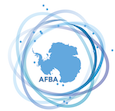A Functional Biogeography of the Antarctic
Biogeography, Function and a Basis for Securing Antarctic Biodiversity
Antarctica and its surrounding, sub-Antarctic, islands are among the world’s most spectacular and least disturbed environments. The sub-Antarctic islands are staggeringly beautiful. Their habitats range from lush tussock grasslands in the lowlands to polar desert and glaciers in the uplands. Some have little vegetation at all. Others, in the more northerly reaches, may have lowland woody habitats.
All of the islands are home to huge populations of seabirds and seals. They include albatrosses, penguins, elephant seals, and several species of fur seals. The islands’ vegetation includes extraordinary flowering plant species such as Ross Lillies and the Kerguelen Cabbage, but is dominated by groups such as the mosses and lichens. Terrestrial life includes just a few endemic birds, such as sheathbills, ducks and parrots, while insect life abounds. Many of these insects are curious, having reduced wings or no wings at all.
Some Animals of the Antarctic and Sub-Antarctic
Marine life is equally spectacular in the region. While whales, seals and penguins are perhaps best known, the region has an extraordinary diversity of terrestrial marine life. This includes sea-spiders, isopods and amphipods, and some echinoderms. The extraordinary characteristics of Antarctic fish are also widely known.
The islands have long been of interest to naturalists, including Charles Darwin, Joseph Hooker, René Jeannel, and John Gressitt. They remain so because of their extraordinary biodiversity, and the opportunities they offer to test ideas about the evolution and diversity of life. Conservation biologists are now also concerned by the growing impacts of climate change and of species introduced to the islands from elsewhere that affect the local life.
A Functional Biogeography of Antarctica is an international collaboration of biologists and conservation practitioners seeking to understand the history of life in the region, how it will respond to environmental change, and what can be done to secure its future. – Read more about the team here












